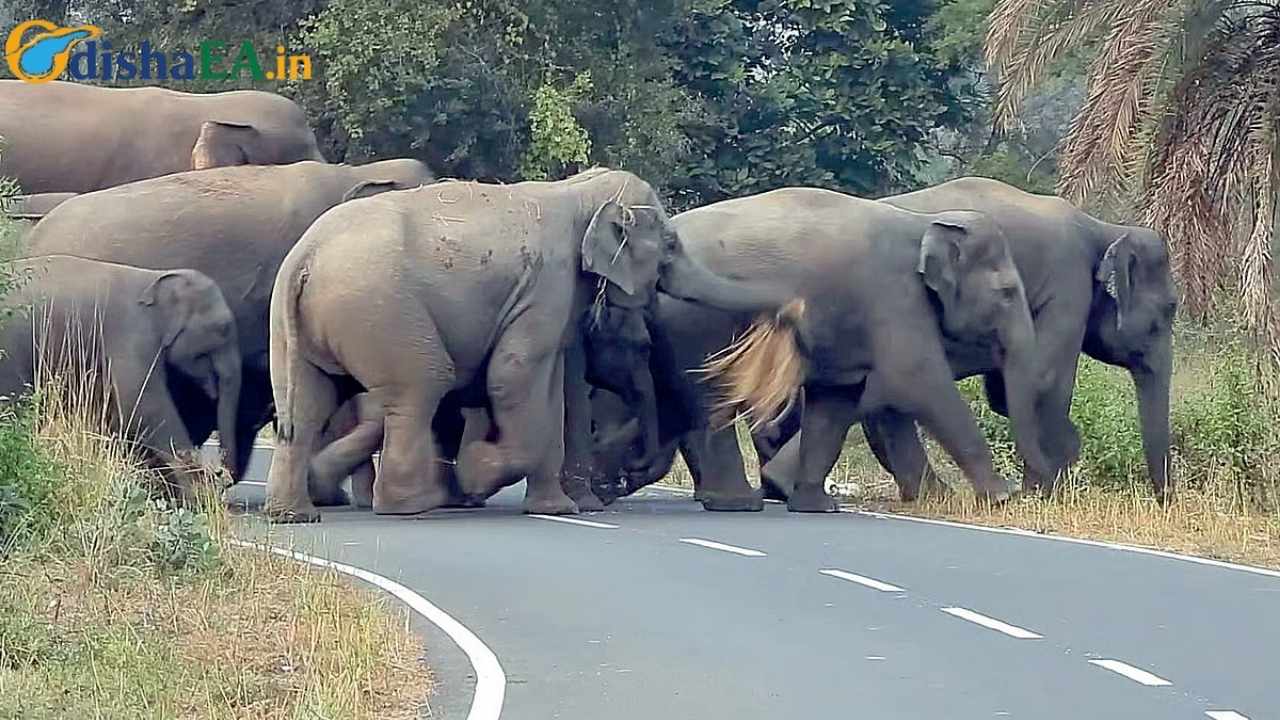When we talk about human-wildlife conflict, the phrase often feels distant—something we see on National Geographic or read about in conservation reports. But in Odisha, India, reality hit hard this September when an elephant rampage turned deadly in Hindol. A villager named Sansar Gananayak tragically lost his life after being trampled by a tusker, sparking widespread fear and frustration in the local community.

This was not a one-off tragedy. Over the past few months, a string of elephant attacks in Dhenkanal district has claimed multiple lives, raising urgent questions about safety, conservation, and what solutions can bridge the gap between people and wildlife.
Elephant Rampage Turns Deadly in Odisha
| Point | Details |
|---|---|
| Recent Incident | On Sept 1, 2025, a villager in Nuagaon, Hindol, was trampled by a wild elephant (Ommcom News) |
| Deaths in Hindol (Past Month) | 5+ deaths: 3 on July 31, 1 on Aug 2, 1 on Sept 1 |
| Compensation | ₹10 lakh (~$12,000) per victim, with ₹1 lakh advanced immediately |
| Community Response | Road blockades, protests, demand for fencing and forest patrols |
| Official Action | Several forest officers suspended; protection squads deployed |
| Broader Impact | At least 500 people die in India annually due to human-elephant conflict (WWF) |
The tragedy in Hindol, Odisha, where an elephant rampage turned deadly, is more than just a local news story. It’s a mirror reflecting how fragile coexistence between humans and wildlife has become. With five lives lost in just over a month, urgent action is needed—not just in Odisha, but globally—to find smarter, safer, and more sustainable solutions.
We owe it to both people and elephants to move beyond fear and toward peaceful coexistence. Because when elephants lose, humans lose too.
The Human Side of the Rampage
Picture this: you’re a farmer waking up at dawn, ready to head to your fields. Instead of worrying about pests or the weather, your heart sinks every time you hear rustling in the forest. Why? Because it might not be the wind—it could be a 6-ton elephant charging toward your village. That’s the daily reality for many residents in Hindol.

The recent tragedy is part of a series of attacks:
- July 31, 2025: Three villagers were trampled in Baghadharia while fetching water.
- Aug 2, 2025: A farmer, Muliya Samal, was killed while heading to his farmland.
- Sept 1, 2025: Sansar Gananayak became the latest victim in Nuagaon.
When you add it up, that’s five deaths in just over a month—all within a few miles of each other.
Why Elephants Are Entering Villages
You might be wondering: Why are elephants storming into human settlements in the first place? It’s not because they enjoy destruction. Experts point to a mix of:
- Habitat Loss: Expanding agriculture and construction cut into elephant corridors.
- Food Scarcity: Crops like rice, maize, and sugarcane attract elephants because they’re calorie-rich and easy to grab.
- Disrupted Migration Routes: Traditional paths elephants used for centuries are blocked by highways, railways, and mines.
According to India’s Ministry of Environment, Forest and Climate Change, over 500 people die every year due to elephant-related incidents (MoEFCC Report). Meanwhile, 100 elephants also lose their lives annually—hit by trains, electrocuted, or hunted. It’s a lose-lose situation.
Community Fear and Anger
In Hindol, fear is now a constant companion. Families sleep in shifts, some staying awake to bang drums or light fires in hopes of scaring off elephants. When the July 31 attack killed three people in minutes, villagers blocked roads, demanding immediate government action.
The state government responded with:
- Compensation of ₹10 lakh (~$12,000) per family.
- Suspension of forest officers for negligence.
- Promises of stronger protection squads and patrols.
But locals argue that these steps are more like a Band-Aid on a deep wound.
What Can Be Done? Practical Solutions
Here’s where we can step out of fear and think solutions. Experts worldwide suggest several proven methods to reduce human-elephant conflict:
1. Community-Based Early Warning Systems
Villages can use WhatsApp groups, sirens, or radio alerts to warn when elephants are spotted nearby. In Sri Lanka, community monitoring reduced surprise encounters significantly.
2. Solar-Powered Fencing
Instead of static fences that elephants often break, solar fences provide mild shocks that deter elephants without harming them. Costly upfront, but long-term effective.
3. Crop Planning
Planting chili, lemongrass, or citrus trees—crops elephants dislike—around village borders can act as a natural shield.
4. Elephant Corridors
Restoring and protecting migration routes allows elephants to move without entering farmlands. India has identified 101 elephant corridors nationwide, but many are still under threat.
5. Compensation & Insurance
Streamlining compensation and offering crop insurance reduces resentment among farmers and discourages retaliatory killings.
Lessons for the U.S. and Global Readers
Now, you might be sitting in Chicago or Dallas, thinking: This sounds far away. Why should I care?
Here’s the deal: while you don’t have elephants charging down Main Street, human-wildlife conflict is a global issue. In the U.S.:
- Black bears raid trash cans in Colorado.
- Coyotes snatch pets in California suburbs.
- Alligators pop up in Florida swimming pools.
The common thread? Urban expansion meets shrinking wild spaces. What’s happening in Odisha is a wake-up call for communities worldwide to think about coexistence, conservation, and safety.
Guide for Villagers Facing Elephant Conflict
Here’s a simplified five-step survival guide (used in India and Africa) that’s easy to remember:
- Stay Calm & Avoid Direct Contact: Don’t provoke or throw things at the elephant.
- Use Noise Smartly: Bang drums or use loud sounds from a safe distance—not when too close.
- Light Barriers: Bonfires or solar lights can discourage night visits.
- Community Watch: Rotate night guards; one person alone is unsafe.
- Report Quickly: Call local forest officials as soon as elephants are sighted.
These steps may sound simple, but they’ve saved lives in multiple regions where elephants and humans cross paths.
Managing Odisha’s Elephant Habitats: Forest Beats to Be Classified for Improved Conservation
Elephant Care in Odisha Gets a Boost with the Introduction of ‘Airawat’ Truck
CM Majhi Advocates for Unified Action at Odisha’s Human-Elephant Workshop
FAQs
Q1: Why are elephant attacks increasing in Odisha?
A: Mainly due to habitat loss, blocked migration corridors, and easy access to farm crops.
Q2: How much compensation do families receive?
A: In Odisha, victims’ families receive ₹10 lakh (~$12,000), though delays and bureaucracy often frustrate villagers.
Q3: Are elephants endangered?
A: Yes. The Asian elephant is listed as Endangered on the IUCN Red List. India is home to 60% of the world’s Asian elephants.
Q4: Can elephants really be kept away safely?
A: Yes. Techniques like solar fencing, crop planning, and elephant corridors have worked in other countries.
Q5: What’s the bigger picture?
A: Human-elephant conflict highlights the tension between development and conservation—a challenge the entire world faces.





